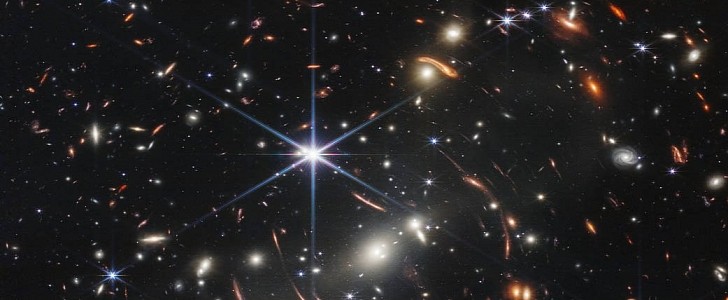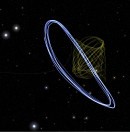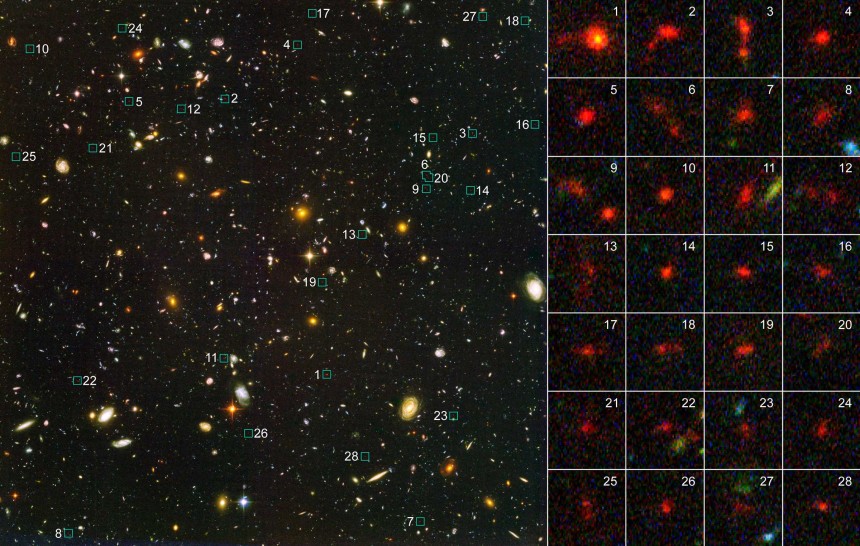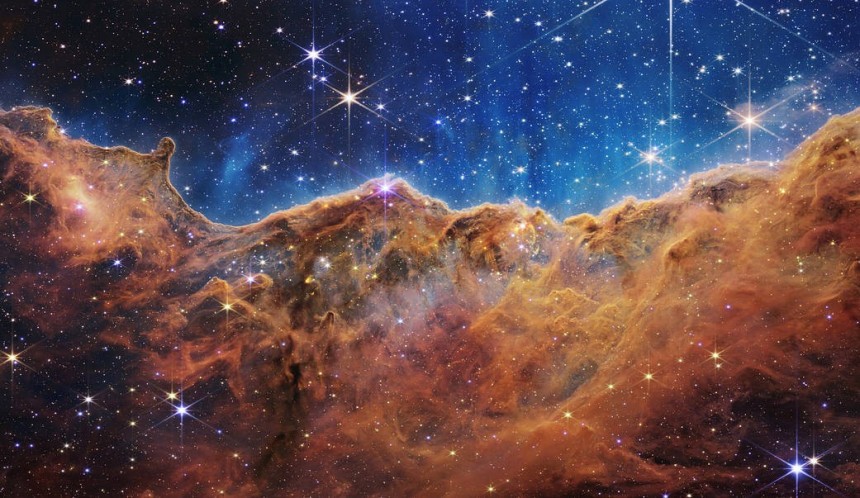We understand if you're finding it hard to find something to be joyful about at the moment. It may feel like the world is going to hell in a handbasket, but NASA and the ESA just gave the entire world something to celebrate. All thanks to the James Webb Space Telescope.
The occasion was JWST's first mission-oriented, non-calibration photographs after a strenuous voyage to the far away L2 orbit line. The voyage was followed by a grueling calibration process that seemed to take an eternity. In the end, the wait was worth it in ways we're struggling to explain accurately.
It started with worldwide press coverage, with opening remarks from U.S. President Joe Biden on June 11th. Followed by the unveiling of a set of infrared photographs that show off the awesome power of JWST in ways that boggle the mind and invigorate the soul. Festivities began with the aptly named Webb's First Deep Field. It contained an image of the galaxy cluster SMACS J0723.3–7327 in a region inside the Volans constellation.
Previous photographs of this cluster from the Hubble Space Telescope are notorious for looking dull and muted. As if we didn't see the full picture when Hubble pointed its sensors toward it. Well, JWST filled in the blanks to an almost unfathomable degree. Using state-of-the-art infrared imaging technology, JWST can now capture galaxies, stars, and potentially even habitable planets where once we could only assume there was an empty vacuum.
It can only be assumed that a vantage point of 1.5 million km (900,000 mi) away from low Earth orbit does wonders for a nice, interference-free vantage point to photograph places so far away it bends space and time. At a distance of 4.6 billion lightyears from Earth, JWST is peering back into a time when our planet was little more than a molten ball of stuck-together asteroids.
Looking back to back at a photo of the same galaxy cluster by the venerable Hubble Space Telescope back to back with JWST shows how much switching from primarily visible light to the infrared spectrum brings the universe into focus in ways we could never imagine. James Webb's First Deep Field revealed thousands of previously unknown stars, galaxies, and gas megaclusters. After seeing how vibrant just a small sliver of the night sky is up close and personal, it's pretty hard to believe humanity is all alone in the universe.
Bursts of existentialism spurred on by the scientific discovery of this magnitude are all well and good. But let's think for a second about just how impactful JWSTs first images are on our modern world. It's the beginning of a new space race in 2022. NASA and the ESA, China, Russia, and a host of other nations are set to launch manned lunar landings again, at least by the time this decade is out.
Humanity is entering into a new age of space exploration 50 years in the making since the last human stepped on the moon in 1972. We'll never get to travel 5.6 billion lightyears away. But you can't help but feel like an image this beautiful, this magnificent, this positively groundbreaking, could light a fire that fuels the international drive to venture out into space as far as our fragile bodies will allow us to.
As it happens, NASA and the European Space Agency are prepping to launch the first test of a novel Lunar exploration spacecraft since Apollo in the form of Artemis I this August. If all goes well, we'll have the first crewed circumnavigational mission on the moon by 2024 and the first manned landing shortly after.
With JWST continuing to take breathtaking shots of the universe to keep us satiated in the meantime, we have to think you're not paying attention if you're not hyped about where modern space travel is taking the human race.
It started with worldwide press coverage, with opening remarks from U.S. President Joe Biden on June 11th. Followed by the unveiling of a set of infrared photographs that show off the awesome power of JWST in ways that boggle the mind and invigorate the soul. Festivities began with the aptly named Webb's First Deep Field. It contained an image of the galaxy cluster SMACS J0723.3–7327 in a region inside the Volans constellation.
Previous photographs of this cluster from the Hubble Space Telescope are notorious for looking dull and muted. As if we didn't see the full picture when Hubble pointed its sensors toward it. Well, JWST filled in the blanks to an almost unfathomable degree. Using state-of-the-art infrared imaging technology, JWST can now capture galaxies, stars, and potentially even habitable planets where once we could only assume there was an empty vacuum.
It can only be assumed that a vantage point of 1.5 million km (900,000 mi) away from low Earth orbit does wonders for a nice, interference-free vantage point to photograph places so far away it bends space and time. At a distance of 4.6 billion lightyears from Earth, JWST is peering back into a time when our planet was little more than a molten ball of stuck-together asteroids.
Bursts of existentialism spurred on by the scientific discovery of this magnitude are all well and good. But let's think for a second about just how impactful JWSTs first images are on our modern world. It's the beginning of a new space race in 2022. NASA and the ESA, China, Russia, and a host of other nations are set to launch manned lunar landings again, at least by the time this decade is out.
Humanity is entering into a new age of space exploration 50 years in the making since the last human stepped on the moon in 1972. We'll never get to travel 5.6 billion lightyears away. But you can't help but feel like an image this beautiful, this magnificent, this positively groundbreaking, could light a fire that fuels the international drive to venture out into space as far as our fragile bodies will allow us to.
As it happens, NASA and the European Space Agency are prepping to launch the first test of a novel Lunar exploration spacecraft since Apollo in the form of Artemis I this August. If all goes well, we'll have the first crewed circumnavigational mission on the moon by 2024 and the first manned landing shortly after.












